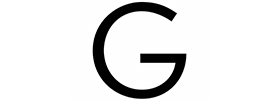Moving Pictures
from The Guggenheim Collection
Marina Abramović » Vito Acconci » Gregory Crewdson » Rineke Dijkstra » Rineke Dijkstra » Olafur Eliasson » Fischli & Weiss » Andreas Gursky » Ann Hamilton » Pierre Huyghe » Robert Mapplethorpe » Mariko Mori » Shirin Neshat » Gabriel Orozco » Pipilotti Rist » Sam Taylor-Johnson (-Wood) » Sam Taylor-Johnson (-Wood) » Kara Walker »
Exhibition: 28 Jun 2002 – 12 Jan 2003
1071 Fifth Avenue at 89th Street
NY 10128 New York

Guggenheim New York
1071 Fifth Avenue at 89th Street
NY 10128 New York
+1-212-4233500
pressoffice@guggenheim.org
www.guggenheim.org
Fri, Sun-Wed 10-17:45 . Sat 10-19:45
During the late 1960s and 1970s, a paradigm shift occurred within visual culture: photography and the moving image were absorbed into critical art practices. In particular, these mediums were used to record ephemeral or performative events and to render visible conceptual systems or to question the supposed objectivity of representation itself. Moving Pictures focuses primarily on artworks from the last decade and proposes that the extensive use of reproducible mediums in today's art has its roots in an earlier formative period. The presence of photography, film, and video in the most radical art practices of the 1970s corresponded to their ubiquity in all forms of popular representation: television, advertising, cinema, and print journalism. Artists turned to these mediums—which bridged such discrete categories as mass culture and high art, technology and culture—in order to contest the preciousness of the unique art object and to challenge traditional aesthetic categories. Additionally, this new, portable technology of video and its unique ability to employ instant playback allowed artists to examine issues of representation and image making to an unprecedented degree. For many early feminist artists, these mediums represented yet-to-be-claimed territory, offering a new means with which to render experiential work. By the end of the 1970s, many artists turned to photography as a vehicle through which to critique photographic representation and to subvert an art system premised on the notion of the original. While this practice came to define much of the 1980s postmodern art, its legacy for the 1990s was essentially the license to indulge in photographic fantasy, image construction, and cinematic narrative. Artists working today freely manipulate their representations of the empirical world or invent entirely new cosmologies. They process their subject matter through conceptual systems or use digital processes to alter their images. Some directly intervene in the environment, subtly shifting components of the found world and establishing their quiet presence in it; others fabricate entire architectural environments for the camera lens. Drawn from the Guggenheim Museum's permanent collection, this exhibition proceeds chronologically after a prologue on the first level examines unexpected ways in which contemporary artists have utilized reproducible mediums. Artists from the 1970s, whose performative, time-based work has been deeply influential on artists working today, are featured on the second level. The installation then focuses exclusively on work created during the last twelve years that utilizes photography and video. Though aesthetically and conceptually diverse, the works share a certain distanced relationship to reality—privileging invention or intervention over documentation.